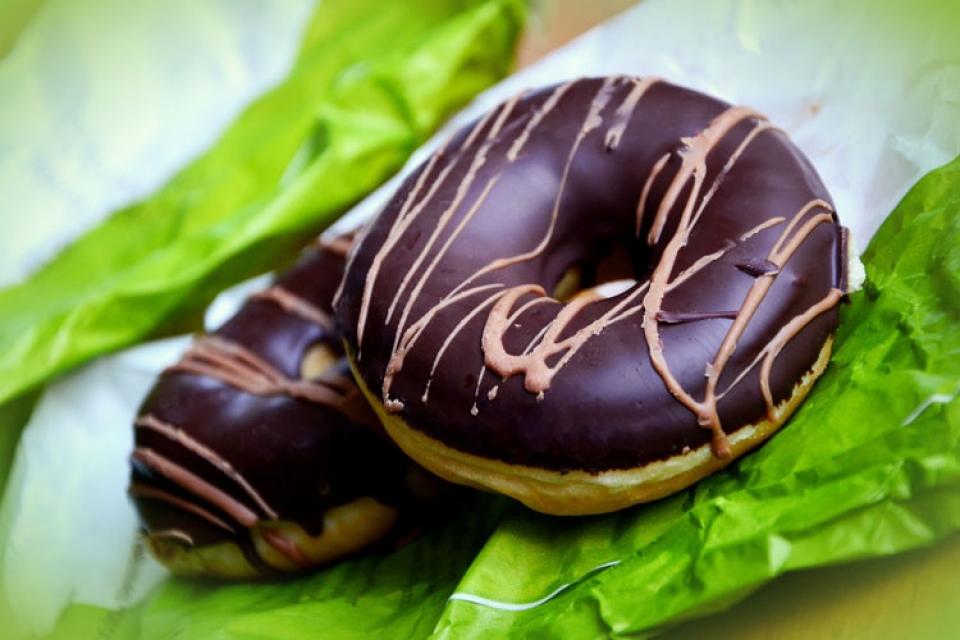Sugar Shock
I don’t know if you can relate, but I’ve always had a sweet tooth. Growing up, it was guaranteed that I would never turn down ice cream, cookies, fudge, you name it, no matter how full I was. And there wasn’t much motivation for me to limit my sugar intake – I’m not overweight and my teeth are healthy and strong.
But as I aged, I could start to tell that my sugar intake wasn’t doing me any favors. I’d crash in the afternoon and crave more carbs, like bagels, or more straight-up sugar, like candy. In the evenings, dinner wouldn’t feel complete until I had eaten some ice cream or chocolate. I’d be tired, cranky, my skin didn’t look great, and my digestion wasn’t as strong as it could be. Something had to change.
So, I started trying to eliminate refined sugars, but found myself compensating with more carbs (which also spike blood sugar levels) and natural sweeteners like maple syrup and honey. It just wasn’t working. What was wrong? Why couldn’t I take control of my sugar cravings?
Turns out, there is some evidence showing that sugar can be addictive. By addictive, I mean losing control of use (have you ever started eating a pint of ice cream, only to look up 15 minutes later and realize you ate the whole thing?), or consuming more and more of the substance, even if you know it’s bad for you. A study in 2002 showed that the region of the brain responsible for pleasure was activated more strongly in rats when they were exposed to Oreos than when they were exposed to cocaine. A 2011 study found that the brains of people with compulsive eating habits reacted to junk food the same way that the brains of people addicted to drugs reacted to drugs. And in 2015, scientists discovered that the brain encodes compulsive sugar-seeking differently than normal, healthy eating.
Sugar affects all the cells in the brain, and our brains see sugar as a reward, which makes us want more of it. As we eat more and more sugar, we’re reinforcing the reward, which in turn makes it hard to quit. Unfortunately, overconsumption of sugar can lead to serious health conditions, including heart disease, obesity, diabetes, and hypertension (recommended intake of sugar for women is 6 tsp per day and for men 9 tsp per day, yet Americans average 19 tsp or more per day). To make matters worse, our food system policies do little to curb the amount of sugar Americans eat each day, as documented in a 2014 report from the Union of Concerned Scientists.
So what is a sugar-loving individual like me supposed to do? Experts recommend focusing on eating “good-for-you” sweets like fruits, low-fat milk, or unsweetened yogurt. Drinking more water can help curb stomach grumbling in between meals, and eating more protein and fiber, which digest more slowly, can help keep us full for longer. Regularly exercising can help interrupt our eating patterns, getting us outside and burning more calories.
One thing I found that helps is setting specific times that I can eat, trying to space my food intake at least 3 hours apart. This helps me say no to unexpected food and treat offers and gives me an excuse to not buy a snack. Also, it’s really hard to go “cold turkey.” Instead, try scaling back your sugar intake a little bit each day so it’s not a shock to your system (trust me, as someone who has done the “cold turkey” strategy – it leads to crankiness, lethargy, and disappointment).
It’s still a struggle for me to balance my sugar cravings and enjoyment of treats with what I know are healthier choices and will make me feel better in the long run. Finding alternatives to sugar, from fresh veggies and fruit to healthy nuts and seeds, is a great way to experience all that we have available to us this time of year, and I think the challenge is worth it! Not sure where to begin? Check out the recipe below.
Simple, Quick, and Tasty Vanilla-Banana Ice “Cream” Recipe
This recipe was taught by Krissy Ruddy during a Delicious Spring Detox class at the Co-op. If you’re having a hard time avoiding ice cream, try this recipe for a much healthier alternative.
Ingredients:
1 ripe frozen banana
½ cup almond milk (an unsweetened variety)
Dash of vanilla extract
Swirl of unsweetened nut butter or cacao nibs (optional)
Directions:
Place all ingredients in a food processor or blender and blend until smooth and thick. Enjoy!
Interested in attending one of our upcoming classes? Sign up to receive bimonthly Classes and Events E-Newsletter and visit our Class Calendar.
